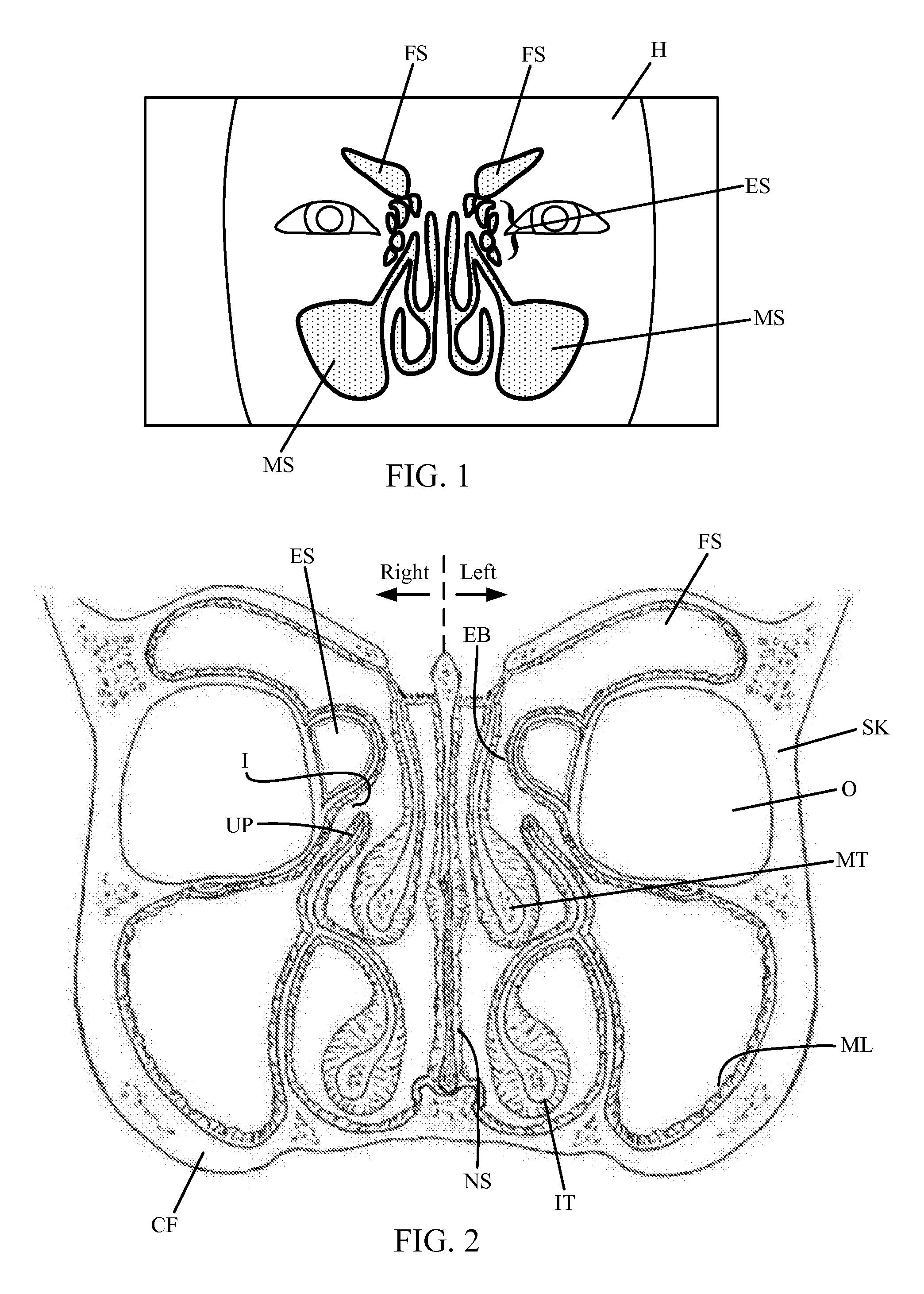Guide catheter and method of use
a catheter and guide technology, applied in the direction of catheters, applications, diagnostic recording/measuring, etc., can solve the problems of significant post-operative pain for patients, relative invasive procedure to the nasal cavity and sinuses, and subsequent removal of the packing can be quite painful
- Summary
- Abstract
- Description
- Claims
- Application Information
AI Technical Summary
Benefits of technology
Problems solved by technology
Method used
Image
Examples
Embodiment Construction
[0092]FIG. 1 illustrates a frontal anatomical representation (parallel to the coronal plane) showing the sinuses FS, ES, MS located within a patient's head H. Above and behind the eyebrows are the frontal sinuses FS. Between the eyes are the ethmoid sinuses ES. Note that unlike the other sinuses, the ethmoids are typically formed as a “honeycombed” structure consisting of several individual air cells. Located behind the cheeks are the maxillary sinuses MS. The sphenoid sinuses are not shown in FIG. 1, but are located further posterior to the ethmoid sinuses.
[0093]FIG. 2 is another frontal view of the sinuses located within the skull bone SK showing additional features. The nasal septum NS divides the nasal cavity into left and right sides. Because the following described structures are generally symmetrical bilaterally, only one of the paired structures is illustrated for sake of convenience. Within the nasal cavity are the middle turbinate MT and the inferior turbinate IT. The mid...
PUM
 Login to View More
Login to View More Abstract
Description
Claims
Application Information
 Login to View More
Login to View More - R&D
- Intellectual Property
- Life Sciences
- Materials
- Tech Scout
- Unparalleled Data Quality
- Higher Quality Content
- 60% Fewer Hallucinations
Browse by: Latest US Patents, China's latest patents, Technical Efficacy Thesaurus, Application Domain, Technology Topic, Popular Technical Reports.
© 2025 PatSnap. All rights reserved.Legal|Privacy policy|Modern Slavery Act Transparency Statement|Sitemap|About US| Contact US: help@patsnap.com



